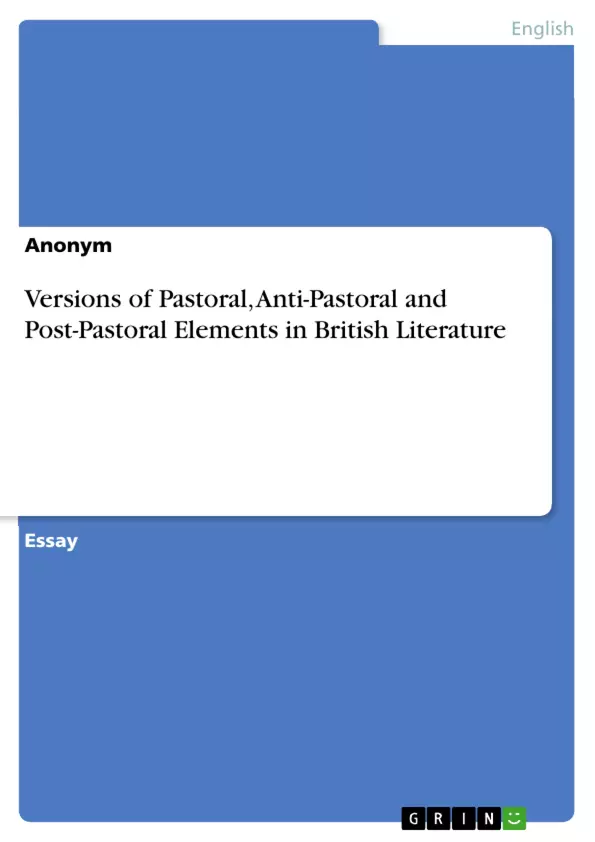Working with pastoral is, however, a challenge of definitions. Pastoral theories and practices are extensive and voluminous. Over the centuries attitudes concerning the genre of pastoral have changed.
Inhaltsverzeichnis (Table of Contents)
- Versions of Pastoral, Anti-Pastoral and Post-Pastoral
- The Pastoral as a Genre
- Theocritus and the Idylls
- Virgil and the Golden Age
- The Passionate Shepherd to His Love
- As You Like It
- The Anti-Pastoral
- Answer to Marlowe
- The Post-Pastoral
- The Woodlanders
Zielsetzung und Themenschwerpunkte (Objectives and Key Themes)
This text examines the evolution and transformation of the pastoral from its traditional roots to contemporary ecocritical interpretations. It explores how the pastoral has shifted from a genre to a concept and analyses the ways in which authors have used pastoral to critique and engage with social, political, and environmental issues.
- The evolution of the pastoral genre from its origins in ancient Greece to modern ecocritical interpretations.
- The relationship between the pastoral and nature, including the idealization of rural life and the critique of urbanization.
- The role of the anti-pastoral in challenging and subverting the traditional pastoral ideals.
- The post-pastoral as a response to contemporary environmental concerns and its engagement with social and political issues.
- The analysis of specific texts and their representations of the pastoral, anti-pastoral, and post-pastoral.
Zusammenfassung der Kapitel (Chapter Summaries)
- This chapter introduces the concept of the pastoral as a genre and mode of representation. It examines its origins in Theocritus' Idylls and the contributions of Virgil, establishing the key elements of the pastoral: the idealization of rural life, the escape from urban society, and the nostalgic longing for a lost Golden Age.
- This chapter analyzes Christopher Marlowe's "The Passionate Shepherd to His Love" as an example of classical pastoral poetry. It explores the poem's setting, themes, and language, highlighting the traditional pastoral elements of idealized landscape, the shepherd's courtship, and the celebration of rural life.
- This chapter discusses William Shakespeare's "As You Like It" as a pastoral comedy that combines traditional pastoral elements with a critique of court life. It explores the play's setting, themes, and characters, focusing on the contrasting worlds of the Forest of Arden as a place of refuge and the corrupting influence of the court.
- This chapter examines Sir Walter Ralegh's "Answer to Marlowe" as a response to Marlowe's poem and a critique of the idealized pastoral. It analyzes the poem's themes, language, and perspective, highlighting the nymph's rejection of the shepherd's idyllic vision and her realistic view of the world.
Schlüsselwörter (Keywords)
The primary focus of this text revolves around the evolution and transformation of the pastoral as a genre and concept. Key terms include: pastoral, anti-pastoral, post-pastoral, genre, mode, Theocritus, Virgil, Arcadia, Golden Age, idealization, escape, nostalgia, urbanization, nature, culture, rural life, urban life, environmental concerns, social justice, political issues, ecocriticism, complex pastoral, sentimental pastoral, Marx, Williams, Gifford.
- Arbeit zitieren
- Anonym (Autor:in), 2021, Versions of Pastoral, Anti-Pastoral and Post-Pastoral Elements in British Literature, München, GRIN Verlag, https://www.grin.com/document/1481934



